mocs and afols
It may or may not be by accident, but ‘moc’ and ‘mod’ sound very similar. And indeed, both are close kin. The abbreviation ‘mod’ means ‘modification of a computer game,’ the playable addition to commercial computer-game software, produced by private individuals or groups of those. The acronym ‘moc’ in turn stands for ‘my own creation.’ Meant is an original three-dimensional design using Lego-bricks, quite often accomplished by an ‘afol’—an ‘adult fan of Lego’ … which is not a contradiction in terms, like ‘military intelligence’ is.*
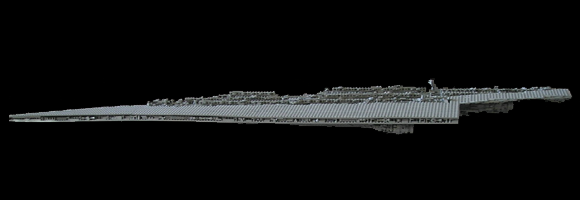
The above pictured side elevation of the moc-version of the ‘Executor,’ the personal flagship of Lord Vader as first seen in ‘↑The Empire Strikes Back‘ (Kershner 1980), is a beautiful example. Created by Lasse Deleuran in 2003, ↑the final model is 157cm long and comprises 3461 Lego-parts:
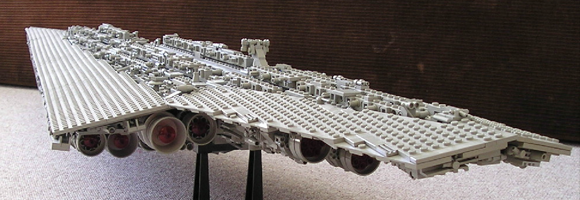
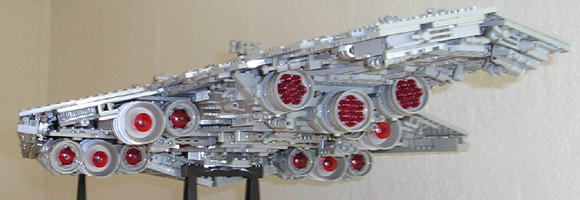
Just for comparison: Later this year ↑Lego will publish an official set for building a Super Star Destroyer (Set 10221). The set comprises 3152 parts and the finished model will be about 125cm long.
There is a gallery carrying a lot ↑more pictures of Deleuran’s ‘Executor’ at Brickshelf. If you strive to build it yourself, you can ↓download the complete instructions as .html plus the according MLCad file. Now, what is that? Well, it’s something which, like Deleuran’s ‘Executor,’ finely illustrates to what lengths the moccers go. It’s the 21st Century, and of course computer aided design (CAD) is put to use by the hardcore free Lego designers. There is an official tool, the ↑LEGO Digital Designer (LDD), downloadable from the Lego Group’s websites, and then there are the high-end tools from the free software scene like the ↑LDraw-based Windows editor ↑Mike’s LEGO CAD (MLCad) by Michael Lachmann:
MLCad (Mike’s Lego CAD) is a powerful CAD system specifically designed to create building instructions as known from Lego, for your own Lego models and creations. MLCad reads and writes LDraw (a program of James Jessiman) compatible files but in an extensive window based environment. The program helps to create building instructions, which show step by step how to build a model.
It looks and feels like professional 3D-visualization or CAD applications, with different viewports and all … it is professional software (↑LDraw installation, ↑MLCad tutorial). Here is how it looks:
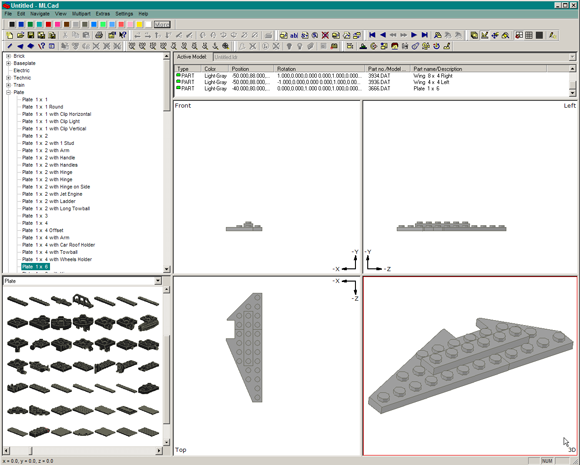
The screenshot shows the first step of my own rendition of a ↑TIE Interceptor:
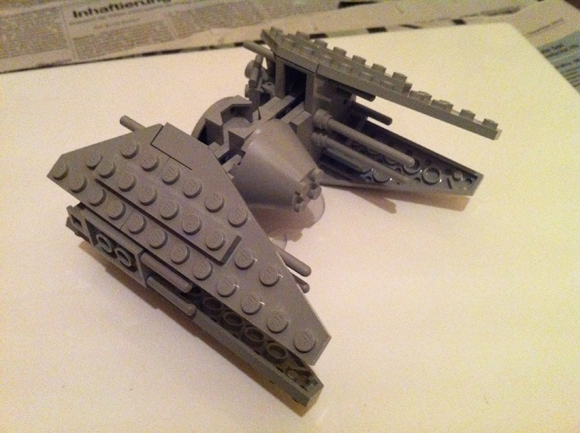
There are sub-disciplines within the moc-scene, like creating in minifigure-scale, or in micro-scale—as small as possible, but still looking gorgeous. Scalewise my little piece is somewhere in-between, but with it I may have founded a new sub-discipline: all parts used are pre-1990 ;-)

